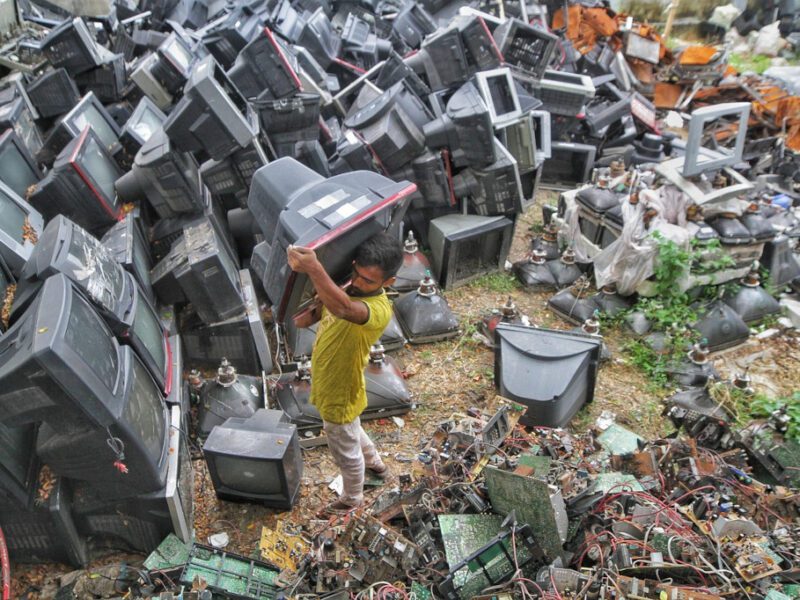Last Updated on October 9, 2025
Let’s face it: the idea of living sustainably can feel a bit overwhelming. When you hear about solar panels, electric cars, or high-tech gadgets promising to shrink your carbon footprint, you might think, “Sounds great, but I can’t afford that!”
Luckily, sustainability doesn’t have to mean breaking the bank. In fact, it’s often about simplifying your lifestyle and making smarter choices. And the best part? Many of these changes not only help the planet but can also save you money.
Here are eight affordable, low-tech sustainability hacks you can start implementing today:
1. Switch to a Cold Wash for Laundry
This one’s a game-changer. Washing your clothes in cold water instead of hot uses up to 90% less energy. According to the U.S. Department of Energy, heating water accounts for the bulk of energy used in a laundry cycle.
Most modern detergents are designed to work in cold water. So you’re not sacrificing cleanliness—just saving the planet (and your electricity bill).
2. Ditch the Dryer (Or Use It Way Less)
Dryers are energy hogs. One load can use between 2-4 kWh of electricity, depending on your model. That adds up rather quickly. In the U.S., they account for about 6% of a home’s total electricity use, consuming around 769 kWh annually.
So, what should you do? Consider hanging your clothes to dry – even if it’s just on a foldable rack or shower rod. This method can save you around $200 a year on energy bills.
Sunlight also helps kill bacteria and naturally bleaches whites. Plus, your clothes will last longer since they’re not being tumbled into oblivion every week.
3. Ditch Disposable Products

Single-use items like paper towels, plastic wrap, and disposable razors may seem convenient, but they add up financially and environmentally. Instead:
- Switch to reusable cloth towels instead of paper ones.
- Invest in beeswax wraps or silicone lids for food storage.
- Try a safety razor for shaving—the blades are way cheaper than buying disposable razors every month.
Not only will you reduce waste, but you could save hundreds of dollars annually.
4. Swap Out Incandescent Bulbs for LEDs
Here’s a low-tech switch that packs a punch. LED bulbs use 75% less energy and last 25 times longer than traditional incandescent bulbs. While they cost a bit more upfront, they pay for themselves in energy savings and durability. The U.S. Department of Energy estimates you can save around $225 a year by switching your home to LED lighting.
5. Make Your Own Cleaning Products
Commercial cleaners often come in plastic bottles and contain harsh chemicals. Instead, whip up your own with ingredients you probably already have. For example:
- Mix white vinegar and water for an all-purpose cleaner.
- Add baking soda for scrubbing power.
- Use lemon juice for a natural disinfectant.
DIY cleaners are not only better for the planet but also much cheaper.
6. Seal Drafts Around Your Home
Drafty windows and doors are like leaving a hole in your wallet. A roll of weatherstripping or some caulk can keep your home warmer in winter and cooler in summer, reducing the need for heating and air conditioning. The U.S. Department of Energy says you can save up to 20% on heating and cooling costs with proper insulation and sealing.
7. Cut Meat, Grow Your Own Herbs and Veggies

You don’t need a huge backyard to grow your own food. A few pots on a windowsill or balcony can do the trick. Start with low-maintenance herbs like basil, mint, or parsley. You’ll reduce your grocery bill and cut down on the carbon footprint associated with transporting food to your supermarket.
Additionally, you can cut meat off your weekly diet. You don’t have to go full vegan to make a difference. Skipping meat just one day a week can have a huge impact. Producing beef, for example, emits 20 times more greenhouse gases than beans or lentils per gram of protein.
Start with a “Meatless Monday” and experiment with plant-based recipes. You’ll probably discover a few new favorites—and save money while you’re at it.
8. Smart Water Collection
Installing a basic rain barrel (around $30-50) can collect about 0.6 gallons of water per square foot of roof area during a 1-inch rainfall. For an average roof of 2,000 square feet, that’s 1,200 gallons of free water per inch of rain – perfect for gardening and reducing your water bill by up to $35 monthly during the growing season.
Why Sustainability Matters
The stats are clear: the average American generates about 4.9 pounds of trash per day. Globally, we’re using natural resources 1.7 times faster than the planet can regenerate them. Sustainability isn’t just a buzzword; it’s about ensuring that future generations inherit a livable world.
By adopting these low-tech hacks, you’re taking tangible steps toward a more sustainable lifestyle. And as a bonus, you’ll keep more money in your pocket. Remember, sustainability isn’t about perfection. It’s about progress. Start small, stick with it, and watch as these simple changes add up to make a big difference.


